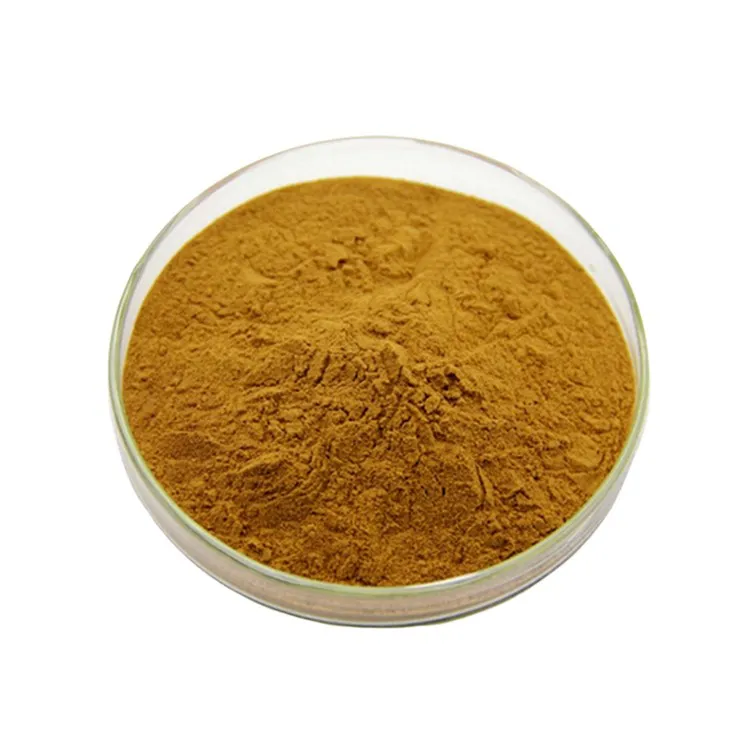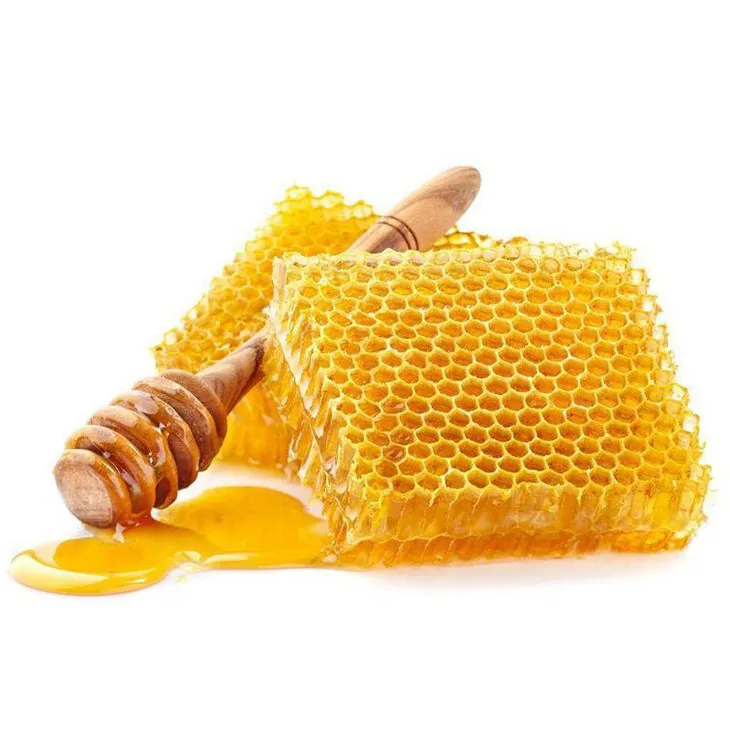- 0086-571-85302990
- sales@greenskybio.com
How to extract propolis extract powder from plants?
2024-11-28

1. Introduction
Propolis is a resinous substance that bees collect from various plant sources and use to seal and protect their hives. It has been known for its numerous health benefits, which has led to the extraction of Propolis Extract Powder for use in various products such as dietary supplements, cosmetics, and pharmaceuticals. The extraction process from plants is a complex yet interesting procedure that requires careful consideration of multiple factors.

2. Plant Selection Criteria
2.1. Propolis - Rich Plants
Bees typically collect propolis from certain types of plants. Some of the common plants that are rich sources of propolis - like substances include poplar and willow trees. These plants produce resins that have the chemical constituents similar to what is found in propolis. When selecting plants for propolis extraction, it is important to identify those that are known to be frequented by bees for propolis collection.
2.2. Pesticide - Free Plants
Plants that have been treated with pesticides can contaminate the propolis extract. Therefore, it is crucial to choose plants that are grown organically or are free from pesticide residues. This not only ensures the purity of the final Propolis Extract Powder but also makes it safe for human consumption in products like dietary supplements.
2.3. Local Flora Considerations
Depending on the geographical location, certain plants may be more prevalent and suitable for propolis collection. For example, in some regions, pine trees may contribute to the propolis composition. Understanding the local flora and its relationship with bee behavior can help in effectively sourcing plants for propolis extraction.

3. Step - by - Step Extraction Procedures
3.1. Collection of Plant Materials
- Identify the appropriate plants based on the selection criteria mentioned above.
- Harvest the parts of the plants that are likely to contain propolis - like resins. This could be buds, young shoots, or bark in the case of trees.
- Ensure that the collection is done in a sustainable manner, without causing excessive damage to the plants or their ecosystems.
3.2. Preparation of Plant Materials
- Once collected, the plant materials need to be cleaned. Remove any dirt, debris, or other foreign substances.
- Cut or break the plant materials into smaller pieces. This increases the surface area, which is beneficial for the subsequent extraction steps.
- Dry the plant materials. This can be done naturally in a well - ventilated area or using a low - heat drying method. Drying helps in reducing the moisture content, which can interfere with the extraction process.
3.3. Extraction Using Solvents
- Choose an appropriate solvent. Ethanol is a commonly used solvent for propolis extraction as it is effective in dissolving the active components of propolis and is relatively safe for use in subsequent processing. However, other solvents like ethyl acetate may also be considered depending on the specific requirements.
- Place the dried and prepared plant materials in a suitable container. Add the solvent in an appropriate ratio. For example, a ratio of 1:5 (plant material to solvent by weight) may be used, but this can be adjusted based on the nature of the plant material and the desired concentration of the extract.
- Allow the mixture to soak for a certain period. This could range from a few days to a couple of weeks, depending on the type of plant material and the extraction efficiency desired. During this time, the solvent will dissolve the propolis - like substances from the plant materials.
- Stir the mixture periodically to ensure proper extraction. This helps in increasing the contact between the solvent and the plant material, facilitating the dissolution of the active components.
3.4. Filtration
- After the soaking period, the mixture needs to be filtered. Use a filter paper or a fine - mesh sieve to separate the liquid extract (containing the dissolved propolis) from the solid plant residue.
- Filter the extract multiple times if necessary to ensure that all the solid particles are removed. This results in a clear liquid extract that contains the dissolved propolis components.
3.5. Concentration
- The filtered liquid extract still contains a large amount of solvent. To obtain a more concentrated propolis extract, the solvent needs to be removed. This can be done using evaporation methods. Low - heat evaporation is preferred to avoid damaging the active components of the propolis.
- Use a rotary evaporator or a simple evaporation setup in a well - ventilated area. As the solvent evaporates, the concentration of the propolis extract increases.
3.6. Drying to Obtain Powder
- Once the propolis extract has been concentrated, it is in a semi - solid or viscous state. To convert it into a powder, further drying is required.
- Use techniques such as freeze - drying or spray - drying. Freeze - drying involves freezing the extract and then removing the remaining moisture under vacuum conditions. Spray - drying atomizes the extract into a fine mist and dries it quickly in a hot air stream.
- The end result is Propolis Extract Powder, which can be stored and used in various applications.

4. Importance of Safety and Environmental Factors
4.1. Safety Considerations
- When handling solvents, proper safety equipment such as gloves, goggles, and a well - ventilated work area should be used. Solvents can be flammable and toxic, so safety precautions are essential.
- During the drying process, especially when using heat, there is a risk of fire. Ensure that appropriate fire - safety measures are in place.
- The final propolis extract powder should be tested for safety, especially if it is intended for human consumption. This includes testing for contaminants, heavy metals, and microbial content.
4.2. Environmental Factors
- The collection of plant materials should be done in an environmentally sustainable way. Avoid over - harvesting from a single area, which can lead to the depletion of plant resources and harm to local ecosystems.
- When disposing of the waste generated during the extraction process, such as the solid plant residue and used solvents, proper waste management procedures should be followed. Solvents should be recycled or disposed of according to environmental regulations.
- Consider the environmental impact of the energy sources used in the extraction process, such as for drying and evaporation. Opt for energy - efficient methods to reduce the carbon footprint.

5. Conclusion
Extracting propolis extract powder from plants is a multi - step process that requires careful attention to plant selection, extraction procedures, and safety and environmental factors. By following the appropriate methods, it is possible to obtain a high - quality propolis extract powder that can be used in a variety of beneficial applications. However, continuous research and improvement in extraction techniques are also necessary to meet the growing demand for propolis - based products while ensuring sustainability and safety.
FAQ:
What are the suitable plants for propolis extraction?
Propolis is mainly collected by bees from the buds and exudates of various plants. Commonly, poplar, birch, willow, pine and other tree species are among the sources. These plants secrete resins and other substances that bees gather and transform into propolis. However, it's important to note that propolis is a product that has been processed by bees rather than directly extracted from plants in the same form as the final propolis extract powder.
What are the basic steps in the extraction of propolis extract powder?
First, propolis raw material is collected. Then, it usually undergoes a purification process to remove impurities such as wax and other contaminants. After that, extraction solvents may be used. Ethanol is a commonly used solvent. The propolis is soaked in the solvent for a certain period to dissolve the active ingredients. Then, through processes like filtration and evaporation, the solvent is removed, and finally, the propolis extract powder is obtained.
How to ensure the quality during the extraction process?
To ensure quality, strict control of raw material sources is crucial. Only high - quality propolis raw materials should be used. During the extraction process, accurate control of parameters such as extraction time, temperature, and solvent concentration is necessary. For example, if the extraction temperature is too high, it may cause the degradation of some active ingredients. Also, proper filtration and purification steps should be carried out to remove any remaining impurities.
What safety precautions need to be taken during the extraction?
When using solvents like ethanol, safety measures must be taken due to its flammability. Adequate ventilation in the extraction area is essential to prevent the accumulation of solvent vapors. Workers should wear appropriate protective equipment, such as gloves and goggles. Additionally, proper storage of solvents and propolis raw materials and products is required to avoid any potential safety hazards.
How does environmental factors affect the extraction?
Environmental factors can have a significant impact. For example, temperature and humidity can affect the quality of the raw propolis. High humidity may cause the growth of mold in the propolis. In terms of the extraction process, if the environmental temperature is not properly controlled, it can influence the efficiency of solvent extraction and the stability of the active ingredients. Also, environmental regulations regarding waste disposal from the extraction process need to be adhered to in order to minimize environmental pollution.
Related literature
- Propolis: Chemical Composition, Biological Properties and Therapeutic Activity"
- "Extraction Techniques of Propolis and Their Influence on the Bioactive Compounds"
- "Propolis: From Beehive to Biomedical Applications"
- ▶ Hesperidin
- ▶ Citrus Bioflavonoids
- ▶ Plant Extract
- ▶ lycopene
- ▶ Diosmin
- ▶ Grape seed extract
- ▶ Sea buckthorn Juice Powder
- ▶ Fruit Juice Powder
- ▶ Hops Extract
- ▶ Artichoke Extract
- ▶ Mushroom extract
- ▶ Astaxanthin
- ▶ Green Tea Extract
- ▶ Curcumin
- ▶ Horse Chestnut Extract
- ▶ Other Product
- ▶ Boswellia Serrata Extract
- ▶ Resveratrol
- ▶ Marigold Extract
- ▶ Grape Leaf Extract
- ▶ New Product
- ▶ Aminolevulinic acid
- ▶ Cranberry Extract
- ▶ Red Yeast Rice
- ▶ Red Wine Extract
-
Camu Camu Extract
2024-11-28
-
Apricot Powder
2024-11-28
-
Peppermint Extract Powder
2024-11-28
-
Sea buckthorn oil
2024-11-28
-
Hericium erinaceus extract powder
2024-11-28
-
American Ginseng Root Extract
2024-11-28
-
Beetroot Powder
2024-11-28
-
Hawthorn powder
2024-11-28
-
Garcinia Cambogia Extract
2024-11-28
-
Baicalin
2024-11-28





















